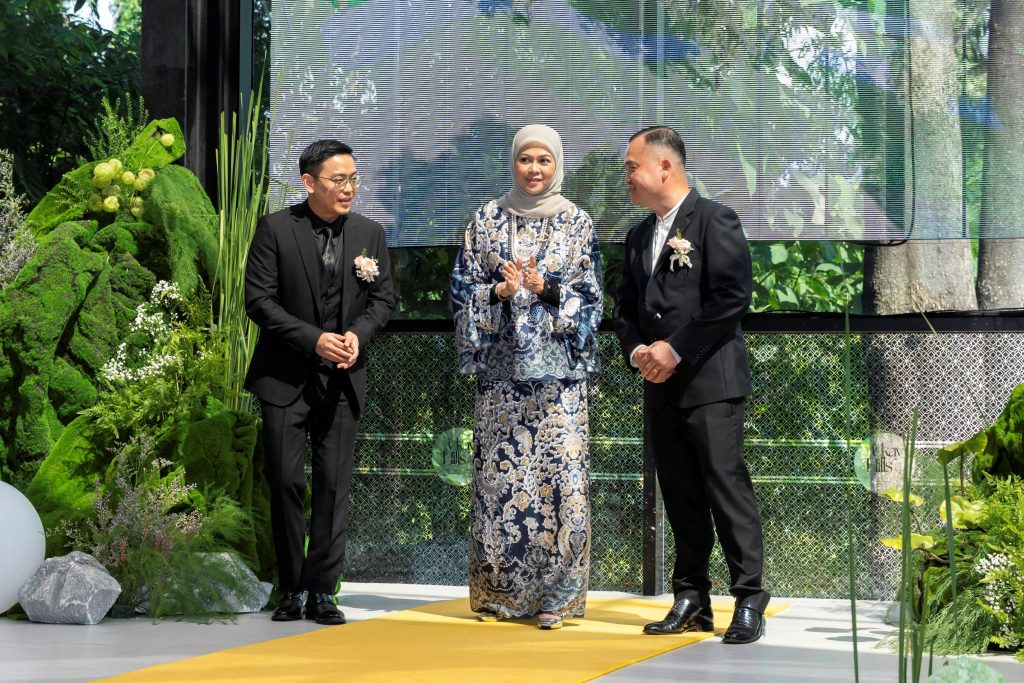Malaysia houses some of the world’s tallest buildings
By Joseph Wong
The 1,483 ft Exchange 106 in the heart of Tun Razak Exchange (TRX), Kuala Lumpur was the tallest building in the country but it has been overtaken by the much-taller 2,083 ft Merdeka 118.
The newest tower is the tallest in Southeast Asia and the second tallest in the world, after Burj Khalifa in Dubai. Malaysia has some of the tallest buildings in the world with nearly 700 buildings. In addition, Petronas Twin Towers still retains its title as the world’s tallest twin structures.
Two other buildings surpassing the 1,000 ft mark in Kuala Lumpur are the Four Seasons Place and Menara Telekom. Ilham Tower currently stands in 6th place. However, another skyscraper is slated for the city in Bukit Bintang City Centre - an 80-storey mix-used tower that will likely take the 4th spot.
With more and more super skyscrapers gracing KL’s skyline, the question on everyone’s lips is: How high can we go? How high can we build if there is no restriction?
The answer? Theoretically, a building could be built at least as tall as 29,032 ft, according to a CityLabs report. For perspective, that is the height of Mount Everest, the world’s tallest mountain. However, its base need not be the size of Mount Everest’s as engineering methodologies and technology can reduce the base size significantly.
According to Veritas Design Group founder and president David Mizan Hashim, it can go as high as the client wants but the engineers will be tasked with coming up with ideas as to how to build it.
“We can design buildings that are one-mile high or even two miles, but will it be feasible? As long as the base is sufficiently big enough, the height can be achieved.
“The question is whether we need a structure of that size. There has been much criticism against building too many tall buildings but the reality is that urban spaces and community engagement can no longer be confined to the street,” he said.
Increasing density
But as the population continues to grow, the density will increase because Kuala Lumpur city will remain the same size. Eventually, it will get pretty crowded. This means that the council will have to start thinking of utilising the multiple planes, not just above ground but possibly below.
“The good news though is while the land size per person has decreased, the amount of sq ft used per person has also decreased. Our houses are smaller, our offices are smaller and even hotel rooms are smaller.
“So that gives us an opportunity to live in a more dense environment. Singapore is at 107 sq ft per person, Manila is at 208 sq ft and Shanghai today is at 282 sq ft. Where Shanghai is today, Kuala Lumpur will be in the next 10 to 20 years. How do we plan for this?” he said.
The only solution is to create urban spaces upward. But there is a cost to a building and at some point, the costs outweigh the benefits.
The current tallest building is The Burj Khalifa at 2,717ft, he says, adding that this will eventually be overtaken by the Jeddah Tower at 3,307ft. The Burj Khalifa is located in Dubai, United Arab Emirates and Jeddah Tower is in Jeddah, Saudi Arabia.
Taller buildings, which were previously ignored, must now consider mitigating wind whipping between buildings. Wind load is a major consideration for most new buildings that exceed the 300m mark.
Wind changes direction when it hits a building, and wind speeds can double around corners. The wind tunnel effect can also be felt flowing between two tall buildings. The closer proximity creates a smaller space for wind to travel, increasing wind speed.

PNB Merdeka Ventures Sdn Bhd chief executive officer Tengku Datuk Ab. Aziz Tengku Mahmud wearing construction safety helmet (PNB Logo) with members of media make a visit and tour of the Merdeka 118 development at Kuala Lumpur. — FAIHAN GHANI/The Star.
Elevators of change
Elevator manufacturers must also rethink how to connect the levels from the ground to the rooftops of new dizzying heights as high-rise buildings continue to rise in height.
As buildings become smarter, their needs change, and elevators require technology to be built into them to make them more efficient in transporting people up and down a building. Many people have had bad experiences waiting for elevators in crowded places.
According to studies, the peak times for elevator usage were in the mornings and the evenings after work. With the exception of lunchtime, when employees flock to the cafeteria or nearby eateries, there is little activity in between.
Elevator speeds must also be considered. Unless the descent speeds exceed 10 metres per second (m/s), especially with a vertical descent of half a kilometre or more, ear comfort and pressure changes do not usually affect healthy users.
As a result, the majority of supertall high-speed lifts have upward travel speeds ranging from 10 m/s to 20.5 m/s and a maximum downward speed of 10 m/s.
According to Tay Hao Giang, a volunteer with The Institution of Fire Engineers, one of the most concerning aspects of high-rise buildings today is the use of elevators during a fire.
Elevators are not used during fires in Malaysia or nearly every other country in the world, he revealed.
With the advent of skyscrapers, however, this may be changing, as the United States of America and China have been testing fire-proof elevators for evacuation. Because of several high-rise fires that have claimed the lives of residents, the use of lifts is being reconsidered.
Many governments and building designers recognise how time-consuming it is to evacuate high-rise buildings via the stairs alone, leaving disabled people stranded. And in a 100-story building, time is of the essence when it comes to fire.
Stay ahead of the crowd and enjoy fresh insights on real estate, property development, and lifestyle trends when you subscribe to our newsletter and follow us on social media.











































